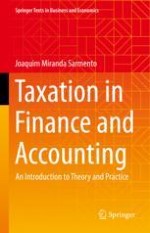2023 | OriginalPaper | Chapter
11. Transfer Prices
Author : Joaquim Miranda Sarmento
Published in: Taxation in Finance and Accounting
Publisher: Springer International Publishing
Activate our intelligent search to find suitable subject content or patents.
Select sections of text to find matching patents with Artificial Intelligence. powered by
Select sections of text to find additional relevant content using AI-assisted search. powered by
